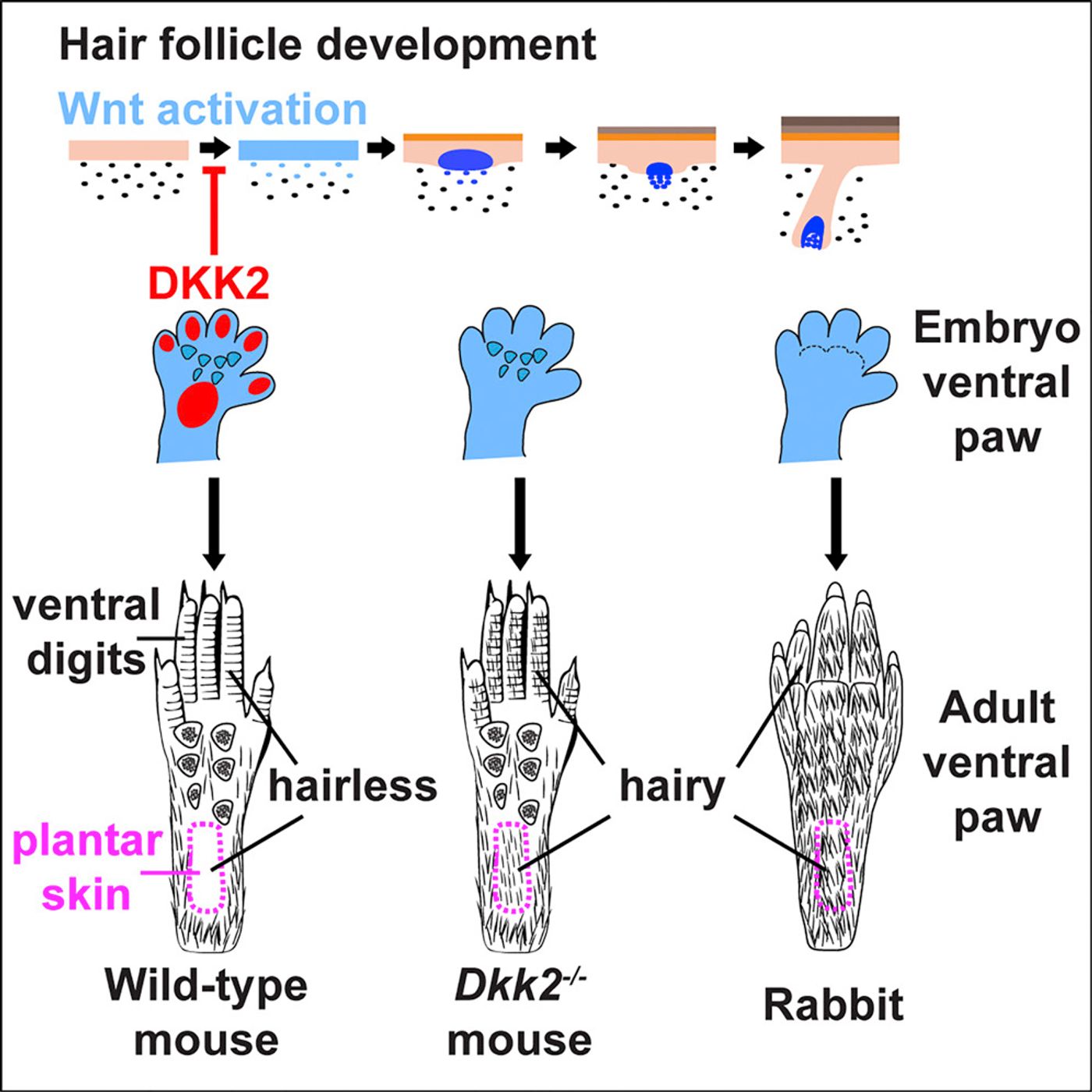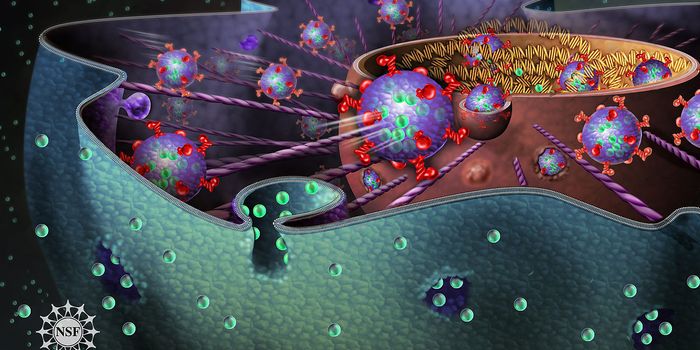Humans are hairy, some more than others but we do not have hair on our soles or palms. Why is that so? How certain specific regions of skin cannot grow hair, and some do? Understanding the underlying biology might help us move beyond wigs for baldness!
Scientists from the University of Pennsylvania Perelman School of Medicine, Philadelphia, have recently investigated haired and hairless skins and identified that the endogenous secreted Wnt inhibitor DKK2 suppresses the hair follicle development and their findings are published in Cell Reports.
Common laboratory animal models, mice are similar to humans, about not having hair on the footpads. However, this cannot be generalized to all mammals. Specifically, rabbits and polar bears have hair on their plantar skin.
The Wnt/β-catenin signaling pathway is crucial for follicular hair development, and the Dickkoph(Dkk) protein family have been reported to inhibit this signaling pathway. But, the specific role of Dkk2 protein in induction and spacing of neurogenic placodes, a developmental structure that precedes the follicular formation had not been investigated yet.
Researchers from the Penn studied the skin from Dkk2 null mice, and their results showed that while hairy skin had low levels of Dkk2 expression, hairless plantar skin had high levels of Dkk2 expression. Furthermore, analysis of rabbit embryos showed that Dkk2 levels were not elevated in plantar vs. dorsal skin explaining the follicular development seen in the former. The authors propose that the evolutionary differences of haired and hairless skin seen in different species could be partially controlled by dkk2 expression.
Dkk2 null mice although usually had follicular hair development regarding their orientation density and spacing, they had developed a striking phenotype of ectopic hair growth in their normal hairless plantar skin. Also, the researchers studied the Wnt/ β-catenin signaling in Dkk2 null mice to understand the role of Dkk2 as a Wnt inhibitor. Histological analysis of the embryonic skin showed a higher increase increased Wnt reporter expression in the Dkk2 null mice when compared to the controls.
Further analysis showed that this increase Wnt expression is localized to the dermis and epidermis of the mutant plantar skin. These results support the observation that endogenous Dkk2 does suppress Wnt/ β-catenin signaling in dermis and epidermis, which allows for the hairless skin formation. Dkk2 seems to mediate the hair follicular inhibition in plantar skin but not for the ectopic follicles suggesting that other Dkk inhibitors could play a role.
"We know that WNT signaling is critical for the development of hair follicles; blocking it causes hairless skin, and switching it on causes formation of more hair," said the study's co-senior author Sarah E. Millar, Ph.D., the Albert M. Kligman Professor in Dermatology and Director of the Penn Skin Biology and Diseases Resource-based Center. "In this study, we've shown the skin in hairless regions naturally produces an inhibitor that stops WNT from doing its job."
Image Source: Song et al., Regional Control of Hairless versus Hair-Bearing Skin by Dkk2, Cell Reports (2018),
What was more interesting from the Dkk2 null mice studies was that, despite the lack of hair in the plantar skin, they still retain all the mechanisms needed to form hair follicles. Implies that Wnt inhibition could initiate the hair growth process. So baldness might not be an end all. Future studies into the Wnt inhibitory mechanisms associated with baldness and wound healing might offer exciting new therapeutic alternatives.
"It may have some relevance to wound healing," said Millar, director of the Penn Skin Biology and Diseases Resource-based Center. "Some people think wounds in hairy areas of the skin will heal more quickly, possibly because of stem cells in the hair follicles. But it's not well-documented or well-understood."
"We hope that these lines of investigation will reveal new ways to improve wound healing and hair growth, and we plan to continue to pursue these goals moving forward," Millar said.
For more information on Dr. Sarah Miller’s work, listen to her talk regarding WNT Signaling in Hair Follicle Development and Cycling presented at the 9th World Congress for Hair Research.
Sources: Cell Reports, Philly Voice
-
MAY 07, 2024Is It Anti-RNP or Anti-Sm/RNP?
- See More
-
APR 30, 2024Immuno-Oncology Virtual Event Series 2024
-
MAY 07, 20243rd International Biosecurity Virtual Symposium
-
JUN 06, 2024The Future of Scientific Conferencing
- See More


















































